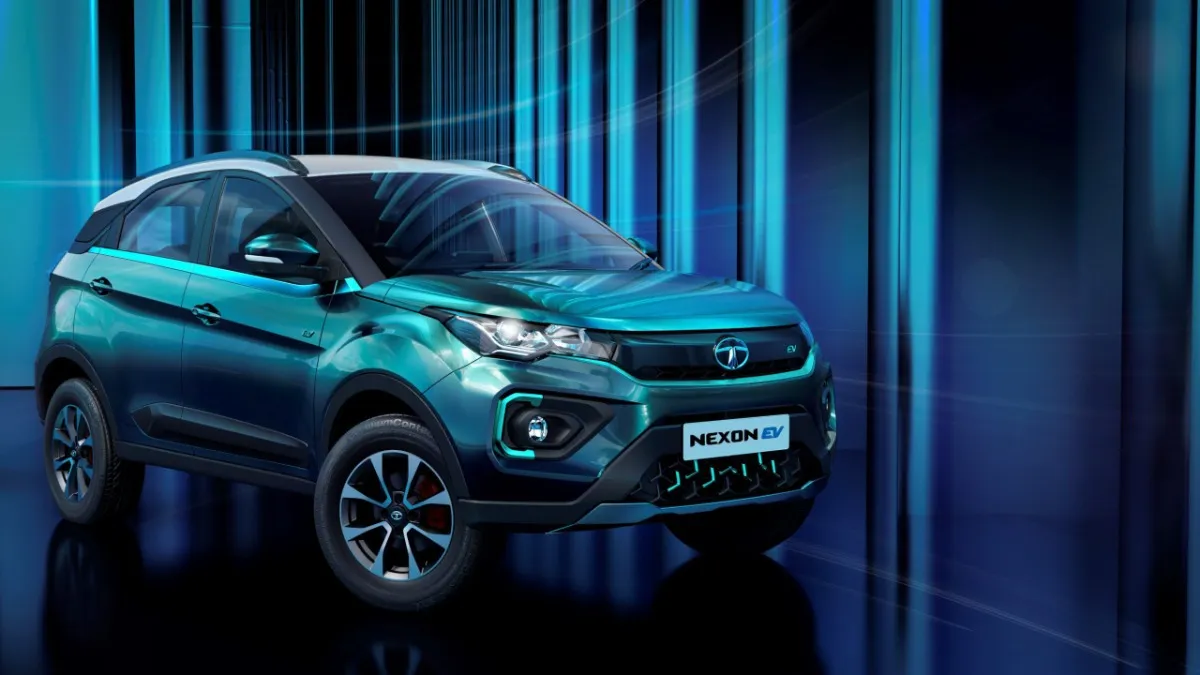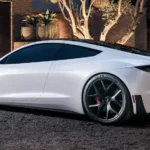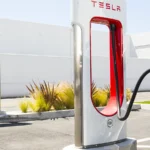Page Contents
- Introduction
- 1. The Rising Popularity of Electric Vehicles
- 2. Government Initiatives and Policies Driving Electric Vehicles in India
- 3. Key Players in the Electric Vehicles in India Market
- 4. EV Models and Features: Catering to Diverse Consumer Needs
- 5. Advantages of Electric Vehicles: Driving the Transition
- 6. Challenges and Roadblocks to EV Adoption
- 7. Future Outlook and Upcoming Developments
- Conclusion
- Are electric vehicles more expensive than traditional vehicles?
- How long does it take to charge an electric vehicle?
- Can electric vehicles be charged at home?
- What is the range of an average electric vehicle?
- Are electric vehicles suitable for long distance travel?
Introduction

The world is shifting significantly towards sustainable transportation, and India is at the forefront of this revolution. Electric vehicles (EVs) have gained remarkable popularity in recent years as more and more people recognize the environmental and economic benefits they offer. In this comprehensive guide, we will explore the current landscape of electric vehicles in India, providing detailed insights into the various updates and developments in this rapidly evolving industry.
1. The Rising Popularity of Electric Vehicles
1.1 Understanding the Electric Vehicle Market
The adoption of electric vehicles has been on the rise globally, and India is no exception. As one of the world’s largest automobile markets, India has witnessed a significant increase in the demand for EVs. This section will delve into the factors contributing to the growing popularity of electric vehicles, including increasing environmental awareness, government initiatives, and technological advancements.
1.2 Overview of Electric Vehicles in India
To understand the current state of electric vehicles in India, it is essential to explore the market dynamics, consumer preferences, and trends. We will examine the sales figures, market share of electric vehicles, and the factors influencing consumer choices. Additionally, we will delve into the future projections for the Indian EV market, providing insights into the expected growth and challenges that lie ahead.
2. Government Initiatives and Policies Driving Electric Vehicles in India
2.1 FAME India Scheme: Propelling the Adoption of Electric Vehicles in India
The Indian government has been instrumental in promoting electric mobility through various initiatives and policies. We will delve into the Faster Adoption and Manufacturing of Electric Vehicles in India (FAME India) scheme, its objectives, and the incentives it offers to both manufacturers and consumers. Furthermore, we will discuss the impact of this scheme on the EV market and the steps taken to ensure its effectiveness.
2.2 EV Subsidies and Incentives: Making Electric Vehicles Affordable
Affordability plays a crucial role in the widespread adoption of electric vehicles. This section will provide an in-depth analysis of the subsidies and incentives offered by the government to make EVs more accessible and affordable to the masses. We will explore the reduced GST rates, exemptions from road tax, and financial incentives available to electric vehicle buyers, highlighting their impact on the market and consumer behavior.
2.3 Charging Infrastructure Development: Powering the Electric Vehicles in India Revolution
One of the significant challenges in the EV ecosystem is the availability of charging infrastructure. The Indian government has recognized this and has been actively working towards developing a robust charging network across the country. We will discuss the efforts taken to establish charging stations in strategic locations, such as highways, parking lots, and residential complexes, ensuring convenience and accessibility for EV owners.
3. Key Players in the Electric Vehicles in India Market
3.1 Established Automobile Manufacturers: Driving Innovation
Several established automobile manufacturers have embraced electric mobility and introduced electric variants of their popular models. We will explore the contributions of companies like Tata Motors, Mahindra & Mahindra, and Maruti Suzuki to the Indian EV market. Through a detailed analysis of their electric vehicle offerings, technological advancements, and market strategies, we will understand the impact of these manufacturers on the growth of electric vehicles in India.
3.2 Startups and New Entrants: Disrupting the EV Landscape
In addition to established manufacturers, innovative startups and new entrants have emerged as key players in the Indian EV market. Companies like Ather Energy, Ola Electric, and Revolt Motors have introduced groundbreaking technologies and business models, challenging the traditional automotive landscape. We will delve into the unique offerings and contributions of these startups, discussing how they are reshaping the future of electric mobility in India.
4. EV Models and Features: Catering to Diverse Consumer Needs
4.1 Affordable EVs in India: Driving Accessibility
Affordability is a crucial factor in accelerating the adoption of electric vehicles. This section will focus on affordable electric vehicle models available in the Indian market, analyzing their price points, features, and performance. By providing detailed insights into the range, battery capacity, and charging time of these models, we will empower consumers to make informed decisions based on their specific requirements and preferences.
4.2 Range, Battery Capacity, and Charging Time: Overcoming Range Anxiety
Range anxiety, the fear of running out of battery while on the road, has been a significant concern for potential EV buyers. We will address this issue by providing comprehensive information about the range, battery capacity, and charging time of different electric vehicle models. By understanding the capabilities of these vehicles, consumers can make informed decisions and alleviate any anxieties they may have.
4.3 Performance and Features Comparison: Choosing the Right EV
Comparing the performance and features of electric vehicles is crucial for consumers to select the right model that aligns with their needs and preferences. We will conduct a detailed analysis of various electric vehicle offerings, evaluating their acceleration, handling, safety features, and technological advancements. By comparing the pros and cons of different models, we will assist readers in making well-informed decisions.
5. Advantages of Electric Vehicles: Driving the Transition
5.1 Environmental Benefits: A Greener Future
Electric vehicles have the potential to significantly reduce greenhouse gas emissions and combat climate change. In this section, we will explore the environmental benefits of EVs, including reduced air pollution, lower carbon emissions, and improved air quality. By understanding the positive impact of electric vehicles on the environment, readers will gain a deeper appreciation for their role in building a sustainable future.
5.2 Reduced Dependence on Fossil Fuels: Energy Security
Electric vehicles offer an opportunity to reduce dependence on fossil fuels and promote energy security. We will discuss the importance of diversifying energy sources and how electric mobility can contribute to achieving energy independence. By transitioning from traditional vehicles to electric vehicles, India can significantly reduce its reliance on imported fossil fuels and pave the way for a more self-sufficient and sustainable energy future.
5.3 Lower Operating Costs: Saving Money in the Long Run
Electric vehicles have lower operating costs compared to traditional vehicles. We will delve into the cost savings associated with EVs, including reduced fuel expenses, lower maintenance requirements, and potential tax benefits. By understanding the financial advantages of electric vehicles, readers will gain insights into the long-term savings and the economic viability of electric mobility.
6. Challenges and Roadblocks to EV Adoption
6.1 High Initial Cost: Overcoming the Price Barrier
One of the primary challenges in the widespread adoption of electric vehicles is their high initial cost. We will explore the factors contributing to the higher price of EVs, including battery technology, economies of scale, and government policies. By understanding the cost dynamics of electric vehicles, readers will gain insights into the measures taken to address this challenge and make electric vehicles more affordable.
6.2 Limited Charging Infrastructure: Addressing Range Anxiety
The availability of a robust charging infrastructure is crucial for the widespread adoption of electric vehicles. In this section, we will analyze the current state of charging infrastructure in India, highlighting the challenges and the steps taken by the government and private sector to address them. By understanding the progress made in developing a reliable and accessible charging network, readers will gain confidence in the future of electric mobility.
6.3 Range Anxiety: Educating Consumers
Range anxiety, the fear of running out of battery during a journey, is a common concern among potential EV buyers. We will address this challenge by providing information about the range of capabilities of electric vehicles, advancements in battery technology, and the availability of charging infrastructure. By educating readers about the factors influencing range anxiety and the measures taken to overcome it, we aim to alleviate any apprehensions associated with EV adoption.
7. Future Outlook and Upcoming Developments
7.1 Advancements in Battery Technology: Enhancing Range and Performance
Battery technology plays a pivotal role in the growth of electric vehicles. In this section, we will explore the advancements in battery technology, such as solid-state batteries, fast-charging capabilities, and increased energy density. By understanding these developments, we will gain insights into the future of electric vehicles, including improved range, faster charging, and enhanced performance.
7.2 New Electric Vehicle Models: Diversifying Choices
Several major automobile manufacturers have announced their plans to launch new electric vehicle models in the Indian market. We will provide an overview of these upcoming models, discussing their features, expected launch dates, and potential impact on the EV landscape. By exploring the expanding range of choices available to consumers, we aim to showcase the continuous growth and evolution of electric mobility in India.
7.3 Government Support and Policy Updates: Driving the Transition
The Indian government continues to play a pivotal role in supporting and promoting electric mobility. We will discuss the latest government initiatives, policy updates, and regulatory frameworks aimed at accelerating the adoption of electric vehicles. By understanding the government’s commitment to sustainable transportation, readers will gain insights into the future trajectory of electric mobility in India.
Conclusion
The EVs (Electric Vehicles in India) revolution is well underway, driven by increasing environmental awareness, government initiatives, and technological advancements. Electric vehicles offer a cleaner, more cost-effective alternative to traditional vehicles, transforming the Indian transportation landscape. Although challenges such as the initial cost and charging infrastructure need to be addressed, the future outlook for electric vehicles in India is promising. As the industry continues to evolve and overcome these hurdles, electric mobility will become more accessible, convenient, and sustainable, ushering in a new era of transportation.
Are electric vehicles more expensive than traditional vehicles?
Electric vehicles generally have a higher upfront cost compared to traditional vehicles. However, the lower operating and maintenance costs of EVs can offset this initial investment over time.
How long does it take to charge an electric vehicle?
The charging time of an electric vehicle depends on various factors, such as the battery capacity and the charging infrastructure. Fast-charging stations can charge an EV to 80% in approximately 30 minutes, while regular home chargers may take several hours for a full charge.
Can electric vehicles be charged at home?
Yes, electric vehicles can be charged at home using a dedicated home charging station. These stations can be installed in residential premises, providing convenience and accessibility to EV owners.
What is the range of an average electric vehicle?
The range of an electric vehicle varies depending on the model and battery capacity. On average, modern electric vehicles can offer a range of 150-300 miles on a single charge, with some high-end models surpassing 300 miles.
Are electric vehicles suitable for long distance travel?
With the advancement in battery technology and the expansion of the charging network, electric vehicles are becoming more suitable for long-distance travel. However, careful planning and consideration of charging infrastructure along the route are essential for a smooth journey.










